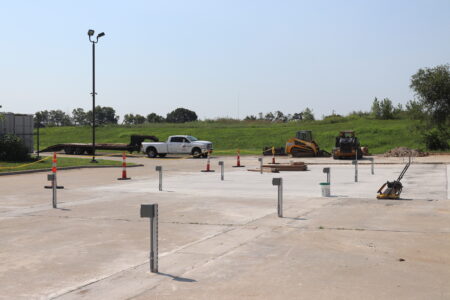‘Historic’ winter storm dumps foot of snow across Douglas County

photo by: Kim Callahan/Journal-World
Massachusetts Street is pictured Monday, Jan. 6, 2025.
The winter storm that hit this weekend dumped a foot of snow across Douglas County, according to meteorologists with the National Weather Service.
Douglas County received total snowfall of 8 to 12 inches, on top of a layer of ice, between a tenth and a quarter-inch thick, that had already formed before the snowfall began.
“This is a historic storm,” Adam Jones, lead meteorologist at the National Weather Service in Topeka, told the Journal-World. ” … And to have every single highway and all of north central (and) northeast Kansas closed is just unheard of.”
What made this storm unique, he said, was the combination of ice and snow accumulations.
“That’s just a function of the cold air that we had in place before the storm arrived and then the Gulf moisture that was brought up with this storm, just the combination of tons of moisture and cold air really (had) significant impacts for the area.”
Jones said the storm heavily impacted areas along and north of Interstate 70, especially along the I-70 corridor from Salina to Manhattan, where numerous car accidents occurred. The area near Junction City is estimated to have received the highest snowfall, with accumulations reaching up to 18 inches.
As the Journal-World reported, major highways were closed across the state because of the dangerous conditions of the winter storm, but they are now starting to reopen. KDOT said in a news release Monday morning that the major state highways in northeast Kansas were back in business. That includes all interstate highways in the Kansas City metro area.
The winter storm also resulted in the third largest snowfall the Weather Service in Topeka had seen in many years, totaling over 14.1 inches, according to a press release. The two largest snowfalls recorded prior to the weekend storm occurred on Jan. 7, 1993, with 15.2 inches, and the highest on record was 17.3 inches, which fell on Feb. 27, 1900.
“We were not too far off from just breaking all the records,” Jones said.
Jones said that while the main roads and highways are slowly improving Monday, side streets or smaller highways could still be hazardous and maybe even impassable.
“We are suggesting, in coordination with the Department of Transportation and other government officials, that folks don’t travel today if they can help it,” Jones said. “If you do go out, make sure that you are dressed accordingly for the cold, so wear multiple layers and cover all exposed skin.”







